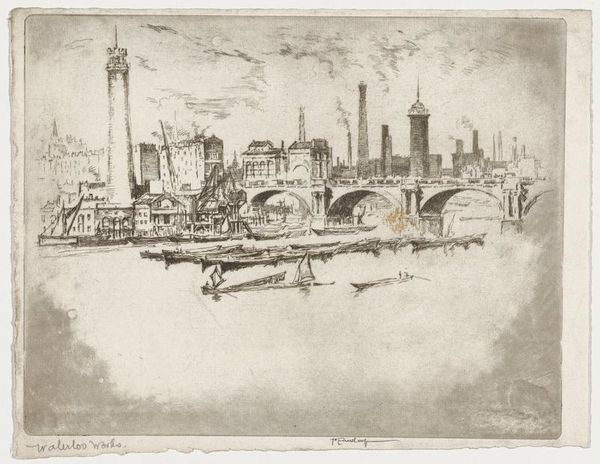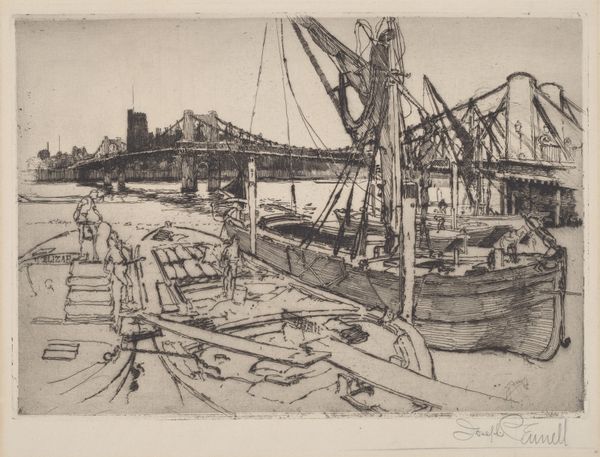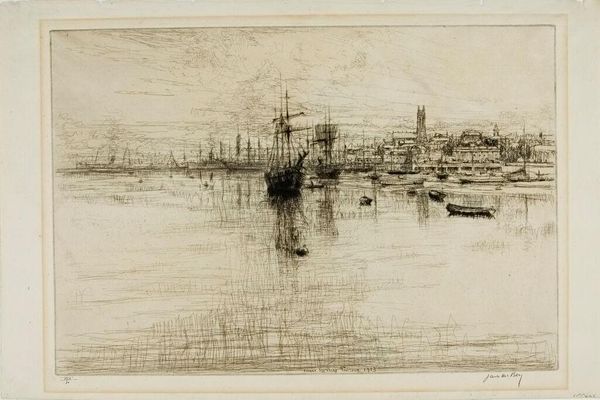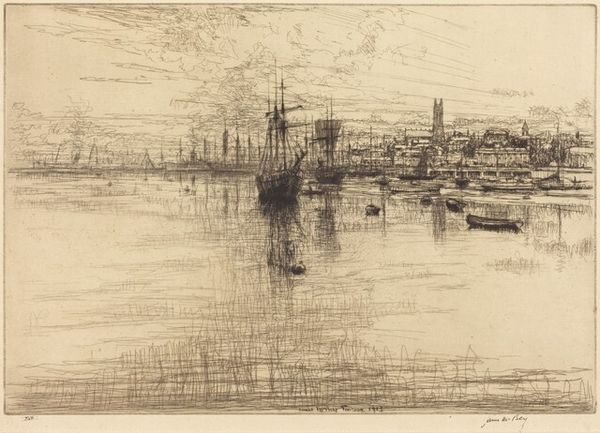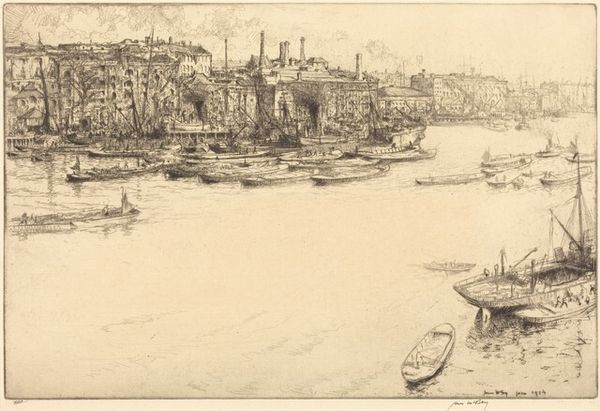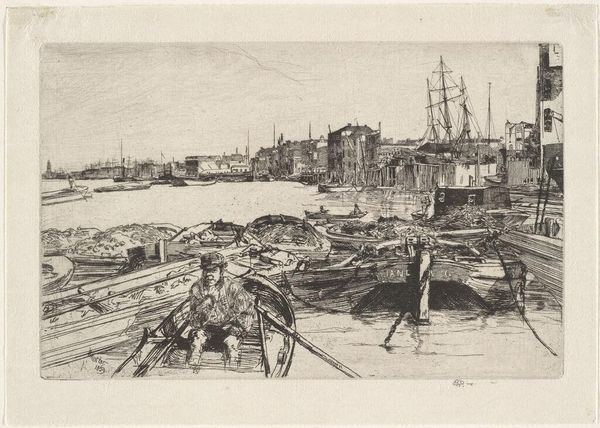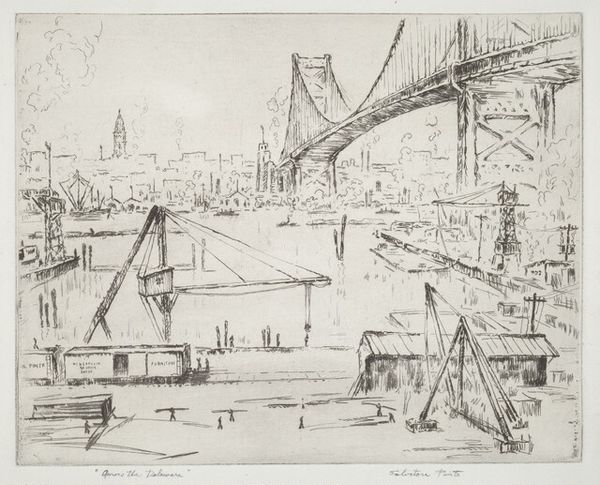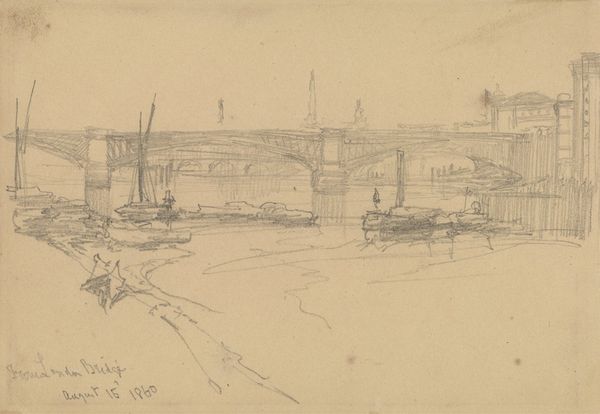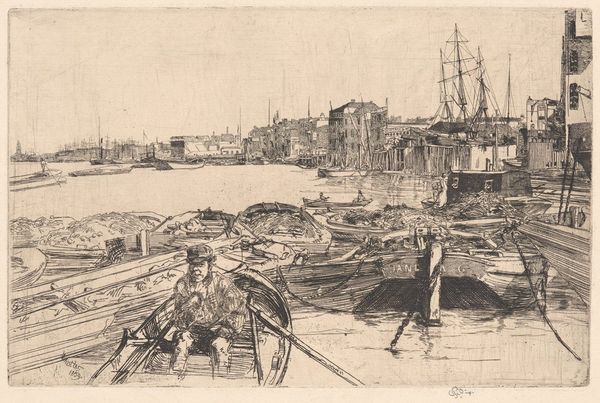
drawing, print, etching, ink
#
drawing
# print
#
etching
#
landscape
#
etching
#
ink
#
cityscape
Dimensions: 7 x 9 15/16 in. (17.8 x 25.2 cm)
Copyright: No Copyright - United States
Editor: This etching by Joseph Pennell, dating to the 19th century, is titled "Penny Steamboats at Waterloo Bridge". The linework gives the scene a slightly dreamlike, hazy quality, as if viewed through mist. How do you read the symbolic weight of this portrayal of London's industrial cityscape? Curator: The industrial haze itself is potent, isn’t it? Smoke was progress, modernity, a signal of wealth and empire. Waterloo Bridge, an impressive feat of engineering, visually connects commerce, trade, and London's civic identity. But observe how the penny steamboats, though central, appear almost ghostlike. They signify accessibility, transportation for the working class, but they are literally fading. Does this imply the social cost of industrial progress? What’s your sense of the architectural and environmental relationship? Editor: I see the steamboats as sort of dwarfed by the bridge, and the industrial buildings on the horizon seem to loom, overpowering them, which might point to that tension. Does that connect to how the image may be viewed by Londoners in a historical context? Curator: Precisely. The architecture of industry overtakes transportation and access. And so how does the cultural memory work when you see this drawing now, removed from that immediate industrial moment? Does the hazy scene appear romantic? Ominous? Or perhaps a bit of both? Editor: For me, I find it both romantic and a bit ominous. I hadn't considered how loaded the images are, reflecting ideas of progress but at a cost. It definitely makes you think. Curator: Exactly! Seeing beyond the picturesque unearths a visual dialogue between progress and lived reality, echoed through history to our present moment. A continuous dance.
Comments
No comments
Be the first to comment and join the conversation on the ultimate creative platform.
